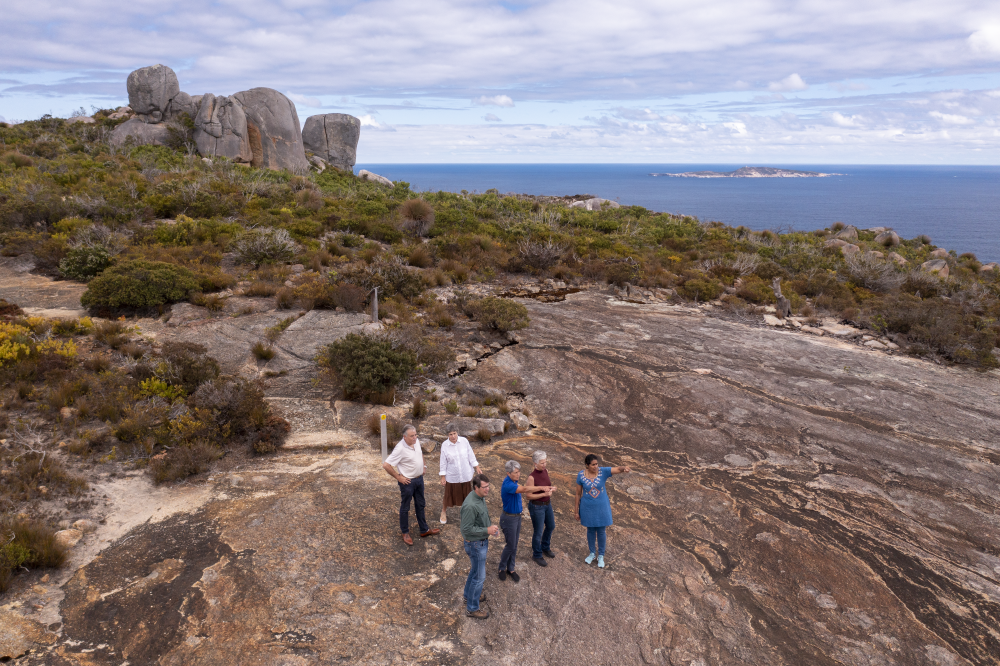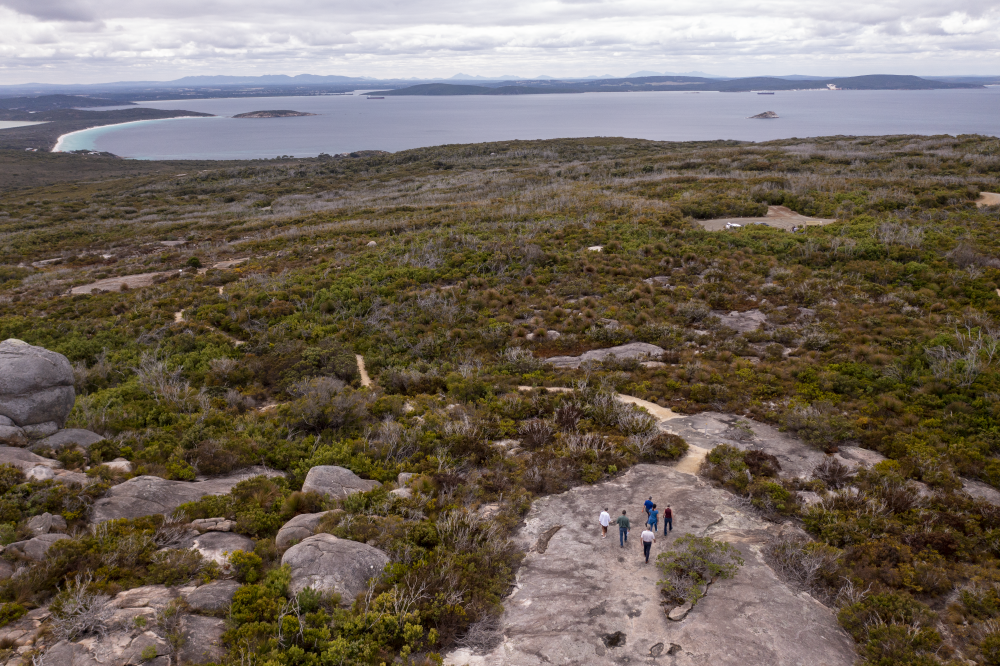It’s not just the landscape you’ll see on a Busy Blue Bus tour to The Gap. Hidden in the bushland at Stony Hill is a story of community and protection. While Albany’s place in the ANZAC legend is well known, a small area just near Frenchman’s Bay contributed to defence efforts in both World War I and World War II. That place is Stony Hill, and it’s where our Gap and Natural Wonders Tour begins. This is the highest point in Torndirrup National Park, and it was the perfect place for radar operators to keep an eye on the coast and make sure Australia wasn’t invaded.
Stony Hill Station’s evolution from World War I to World War II
Starting as a Naval Observation Post and Signal Station in the First World War and at the beginning of the Second, the facilities at Stony Hill were upgraded by May 1943 to become an air warning radar station.
Back in those days, Frenchman Bay Road was a very rough track and the local contractors who were to build the buildings and erect the flagpole were known to curse and sweat as part of their efforts to complete their work in very trying conditions.
The station was nestled amongst huge boulders which ensured the station and lodgings were safe and well camouflaged. But as locals would know, nothing protects from the winds. The radar operators took some time to get used to the weather but appreciated the views and the fishing when they could.
Mostly, the radar operators detected signals from friendly aircraft that were doing routine checks of the coastline and from ships that were delivering supplies to the port. Echoes were permanently detected from Eclipse Island to the West and the Stirling Ranges and Porongurup to the North. Trainee radar operators (or ‘sprogs’ as they were affectionately known) found the Stony Hill station to be a great place to learn.
Albany was a great tourist town, even when working for the RAAF in WWII
Personnel kept themselves occupied when they weren’t working by going to dances at Albany Town Hall, playing Aussie Rules and tennis against local teams, and playing table tennis at Stony Hill in the evenings. One ‘sprog’ had a talent for playing the piano, so the operators were thrilled to be given a piano for entertainment. Things markedly improved when it was tuned! Fishing and cricket were also popular if the weather allowed it.

It is wonderful to know that the officers that were stationed at Stony Hill enjoyed the same sightseeing that Busy Blue Bus Tours offers in our Gap & Natural Wonders Tour. During their downtime, they would go to the Whaling Station tea rooms for a snack with their latest lady friend or wife, or hike across to The Gap, The Natural Bridge, and The Blowholes. And of course, they lived and worked at Stony Hill which is where we begin our tour. You don’t need to hike from Stony Hill, because we can offer you the comfort of our deluxe vehicle and local driver who can tell you stories from the past and present while you are driven to each destination in comfort.
The station at Stony Hill ceased operation in September 1945. When you visit this historic place, you can still see where the station was built, and we recommend you recall these young men who braved the winds to keep an eye on our coastline and maintain safety for all Australians during the Second World War.
Sources:
Memories of work at Stoney Hill RAAF Radar Station by Dennis Greeve written in March 1990
35 Radar – Albany (WA) 328 Radar – Wallal Downs (WA) et Alia by Allan Ferguson
Both documents are available at the Albany History Collection at the Albany Public Library


